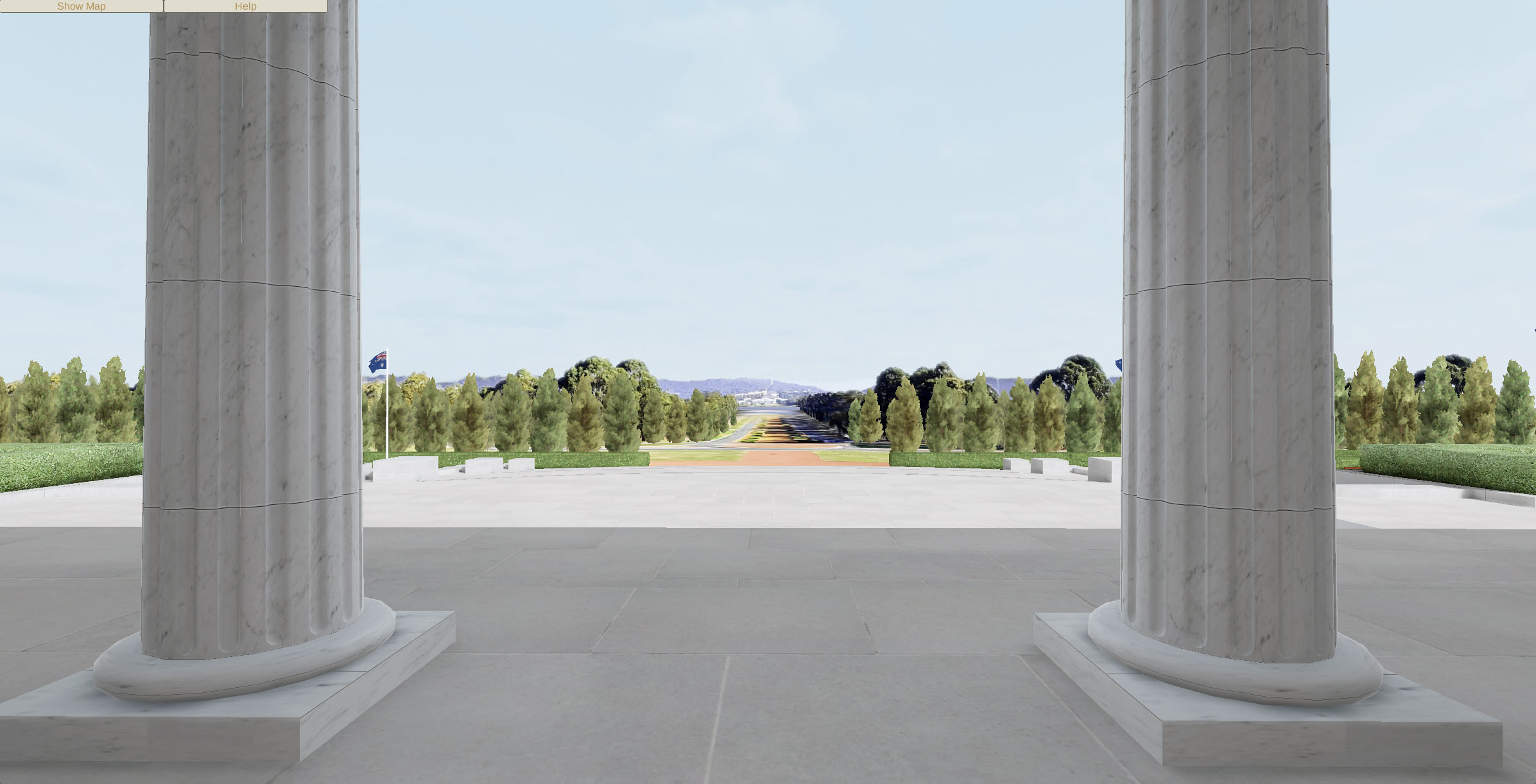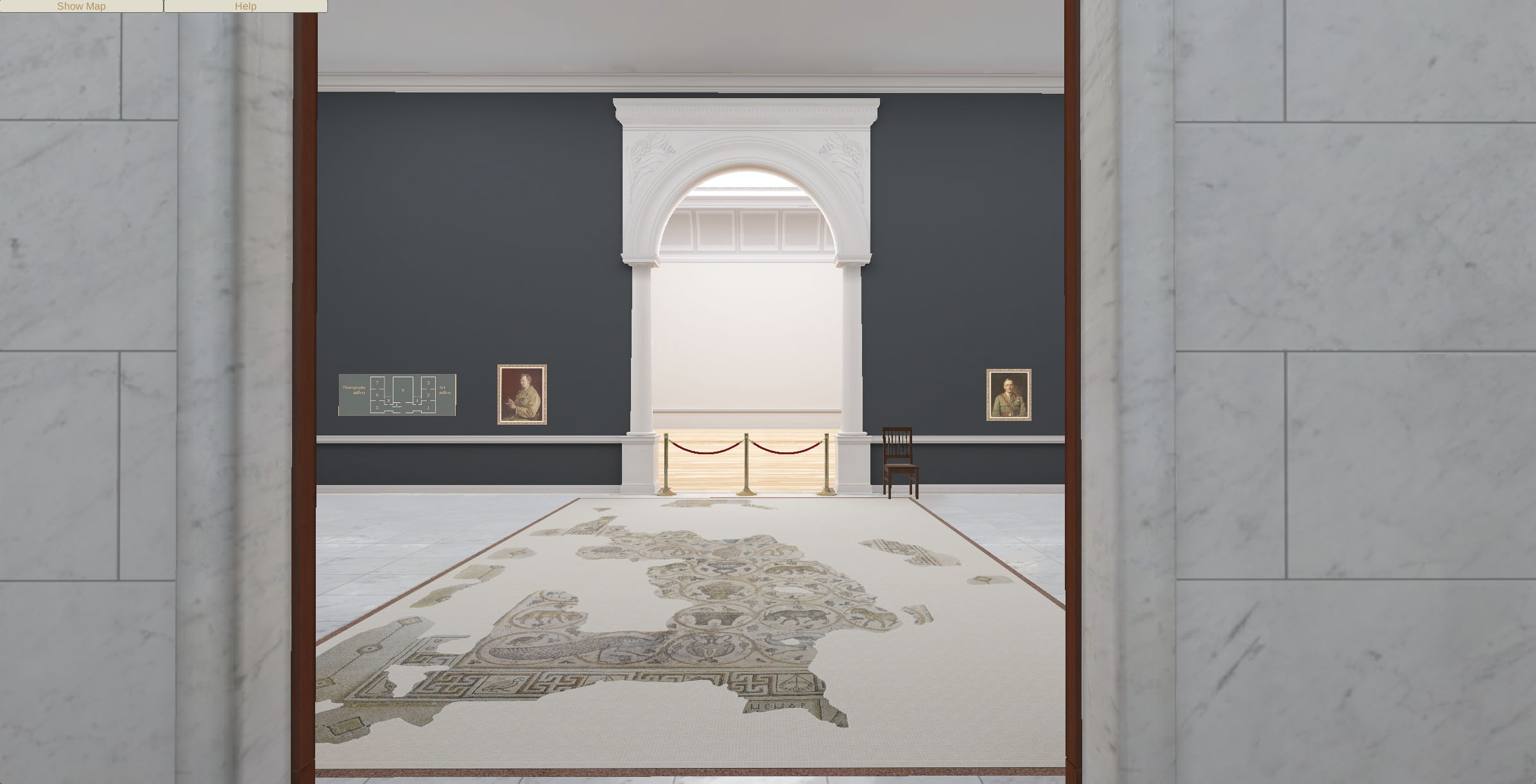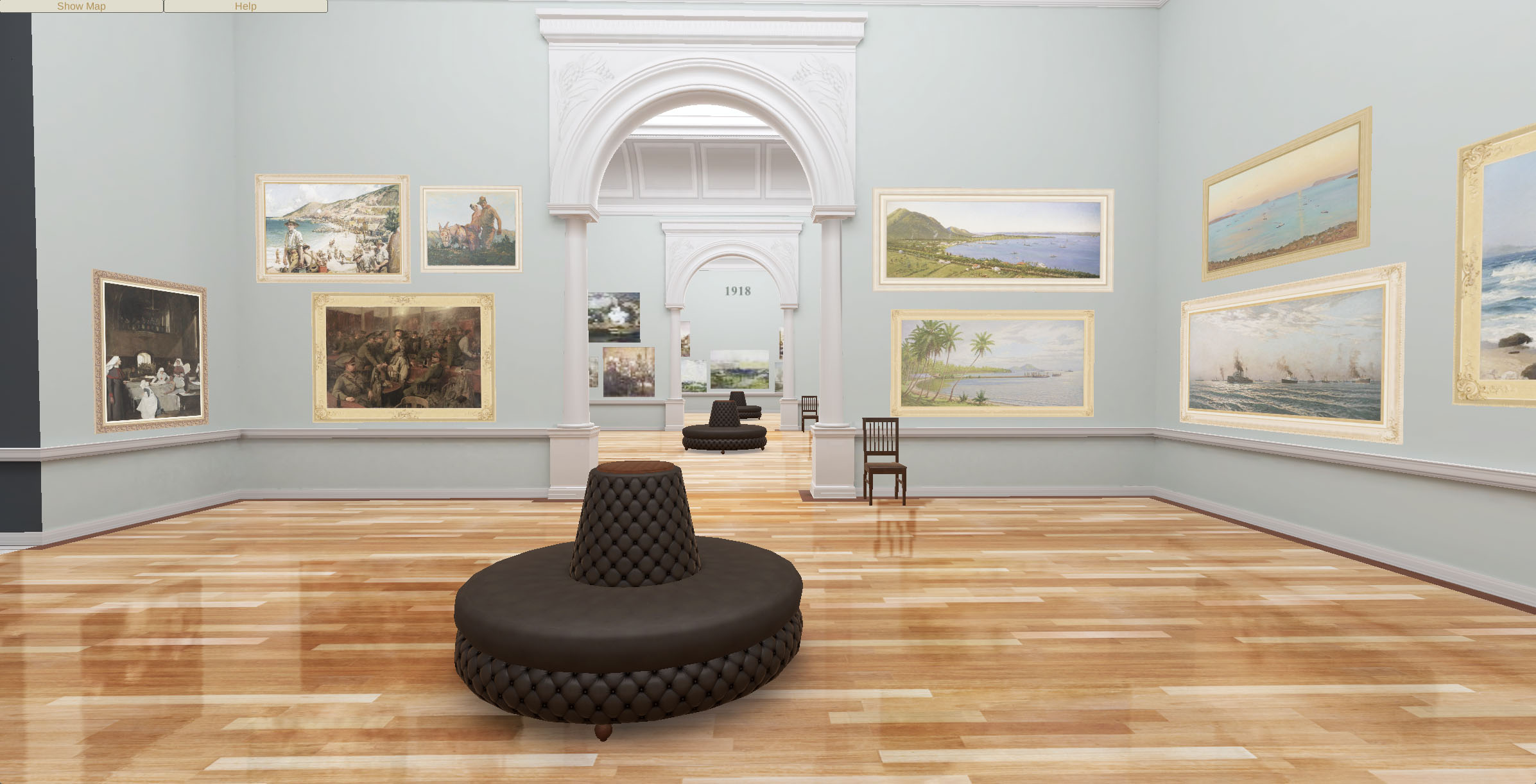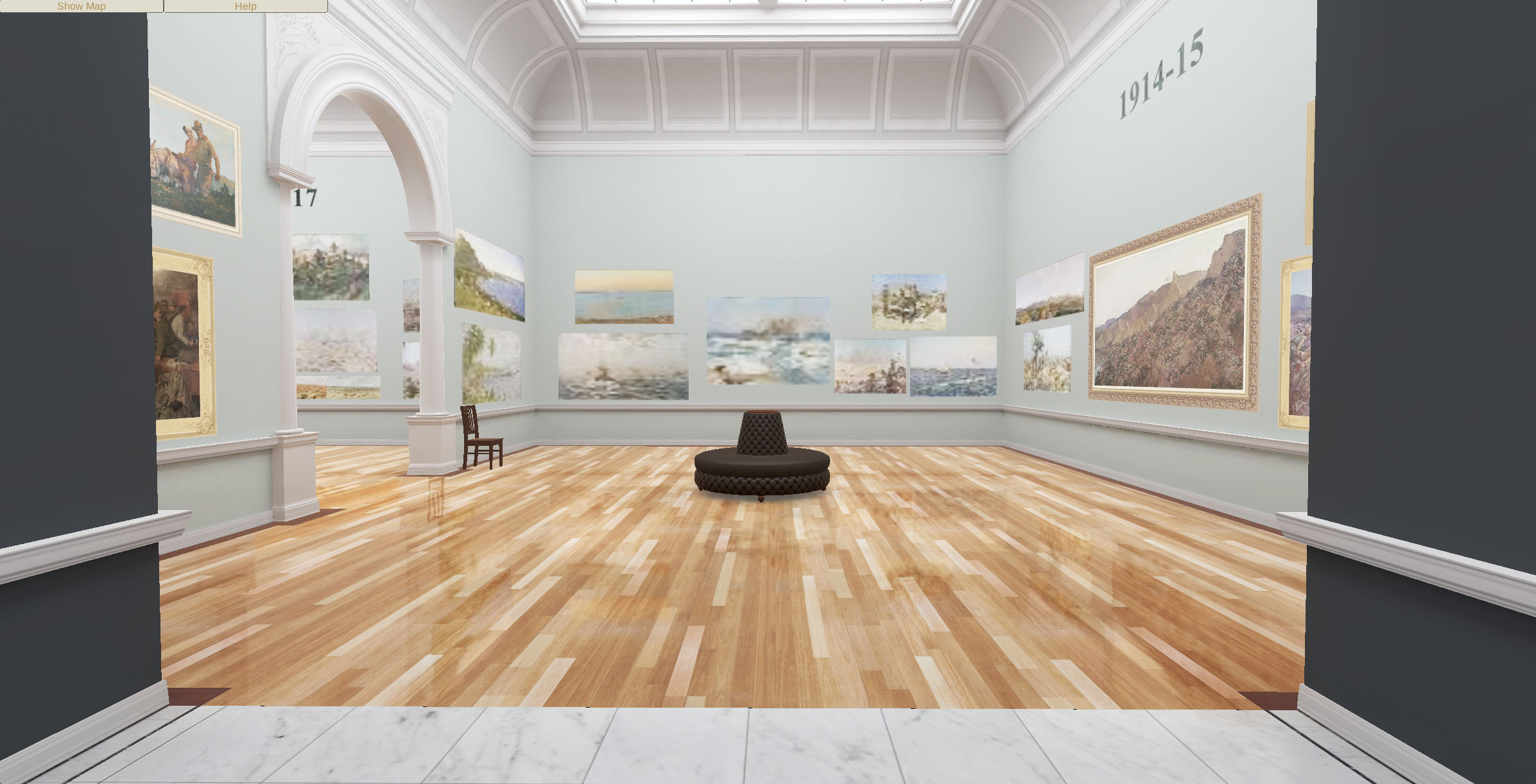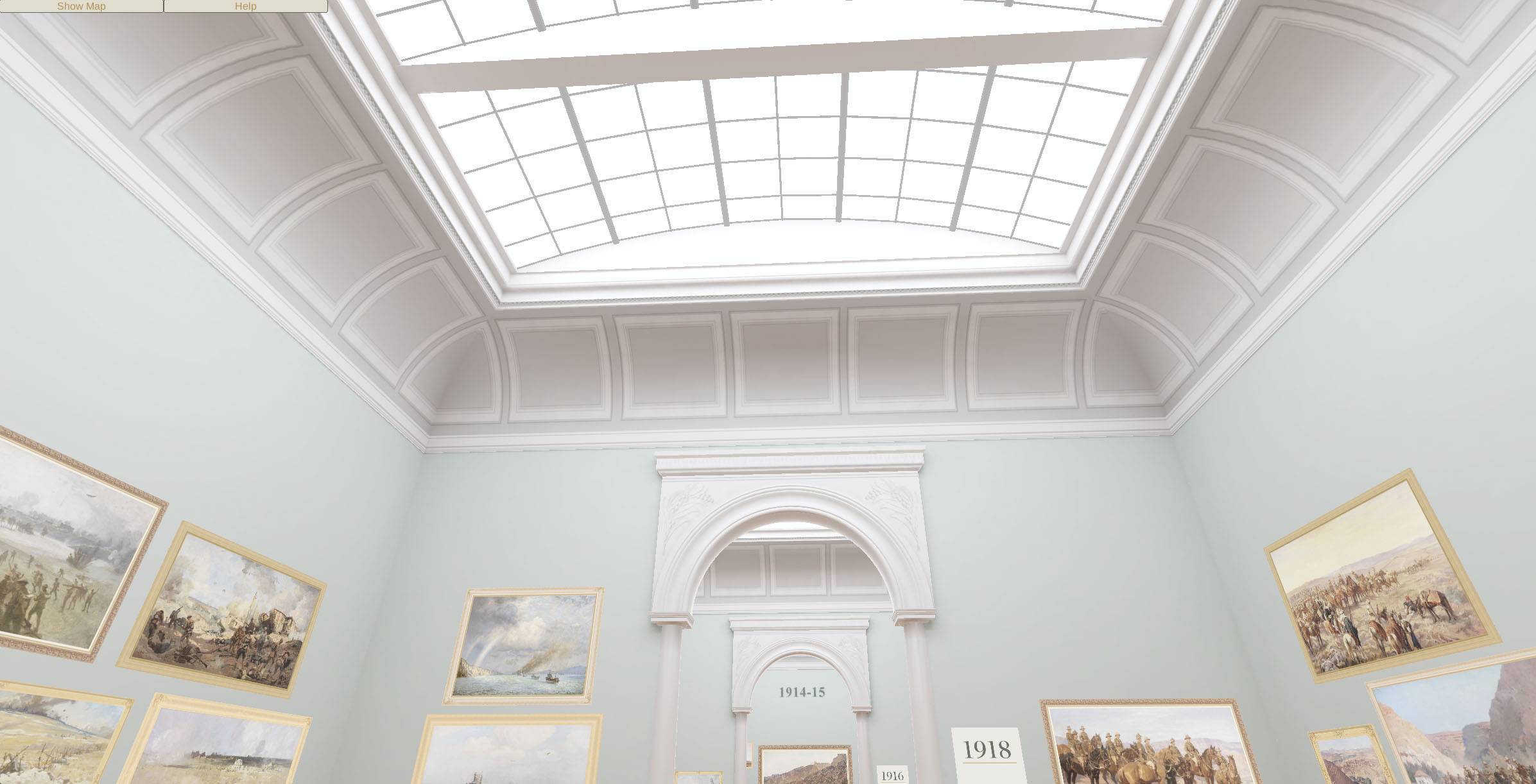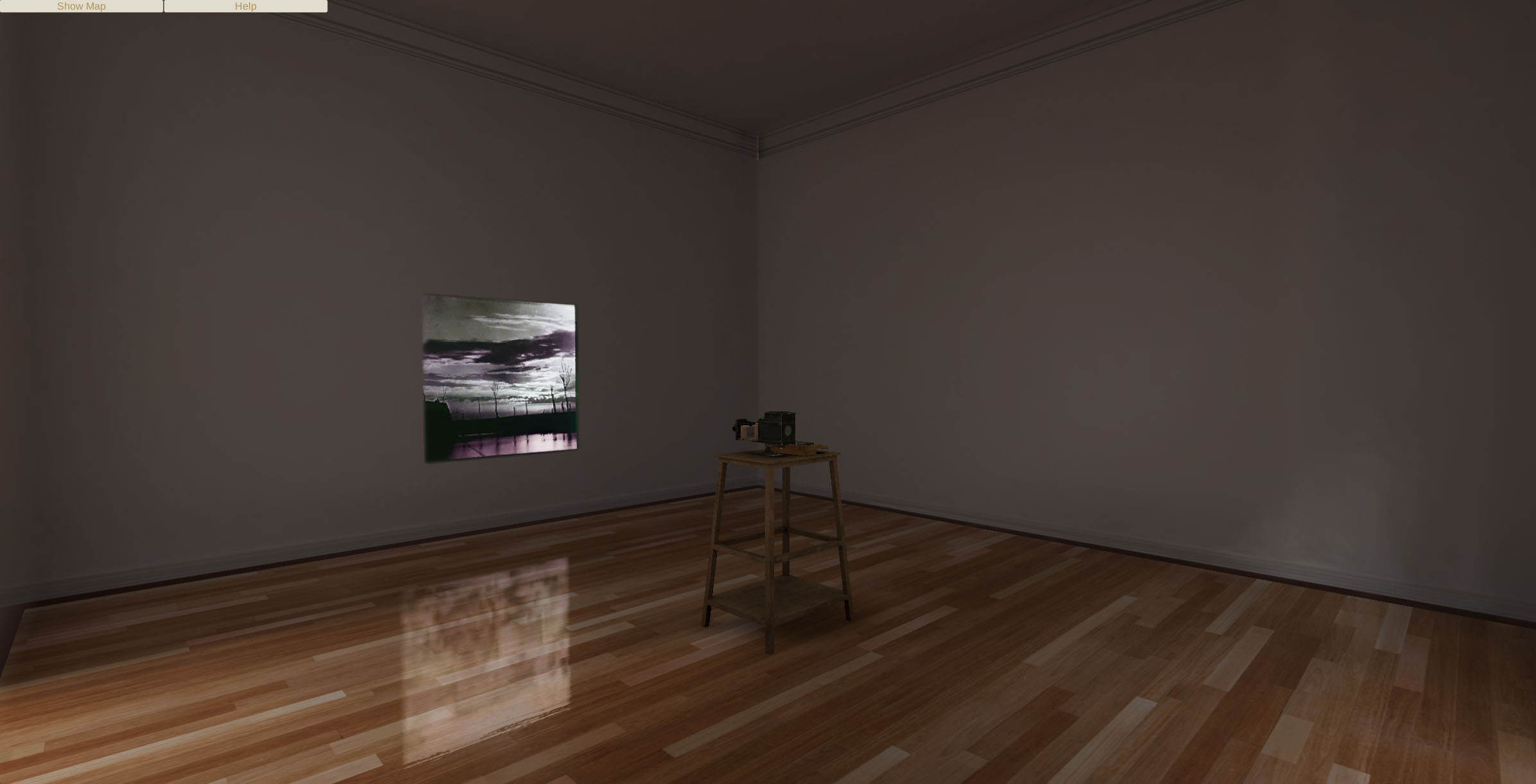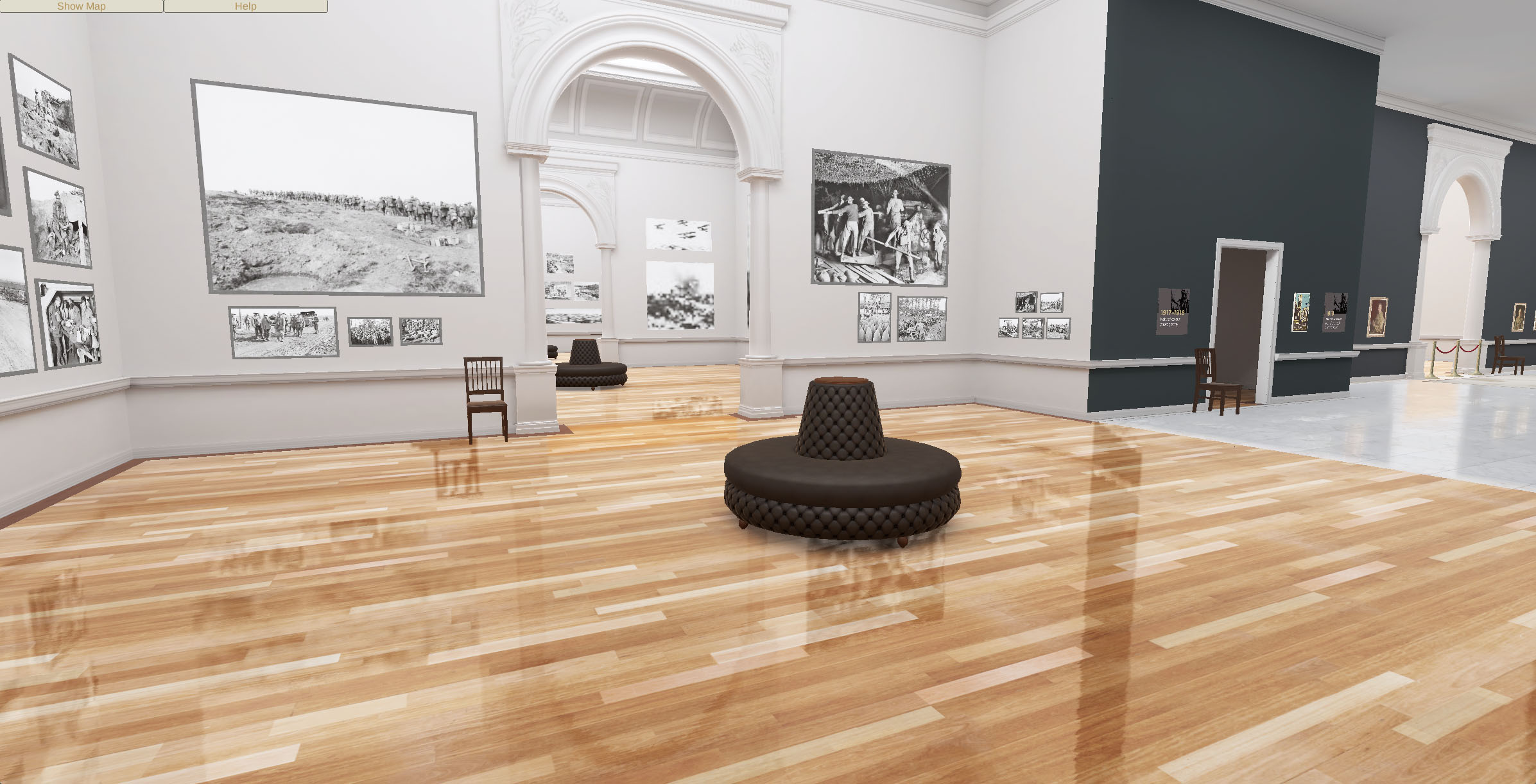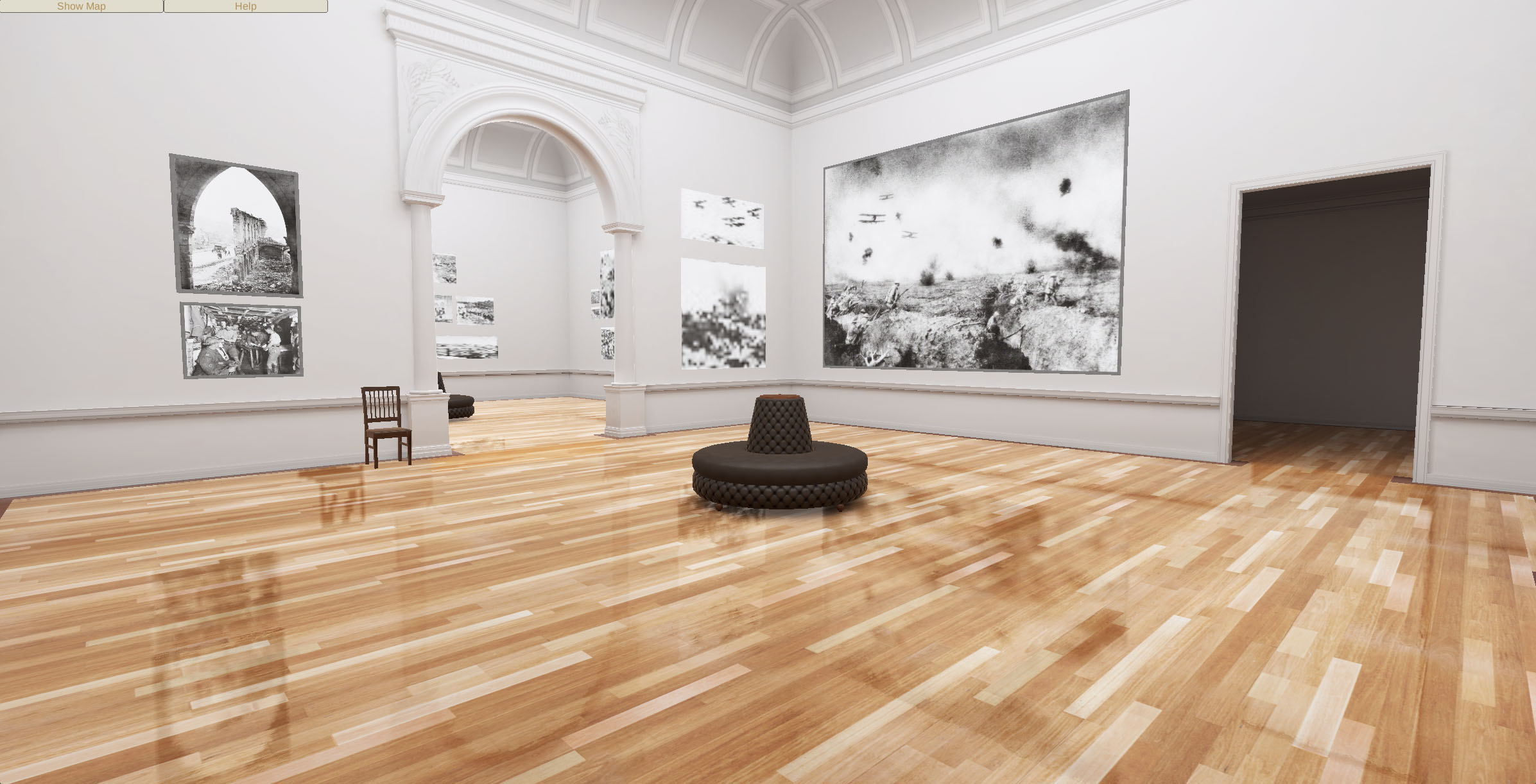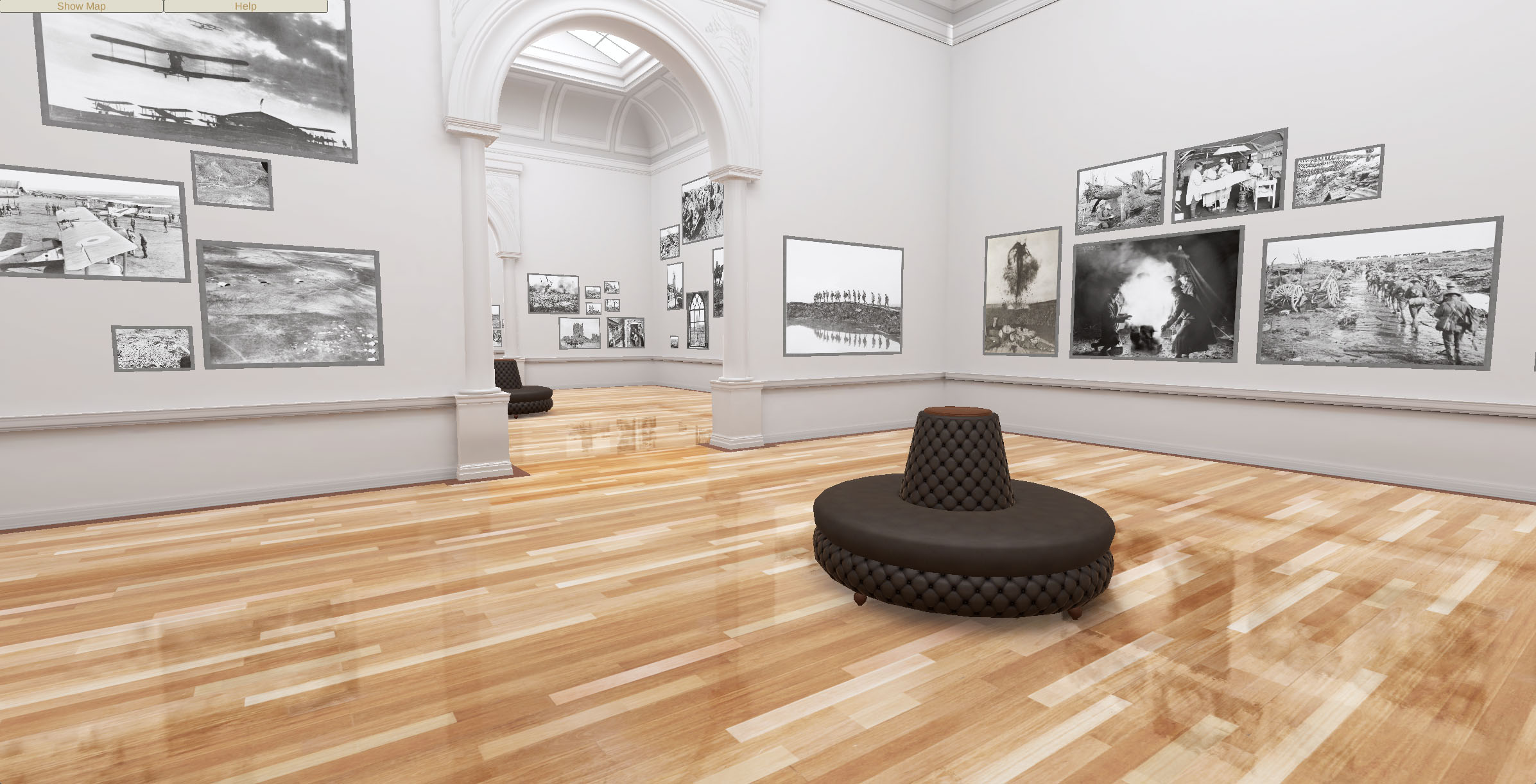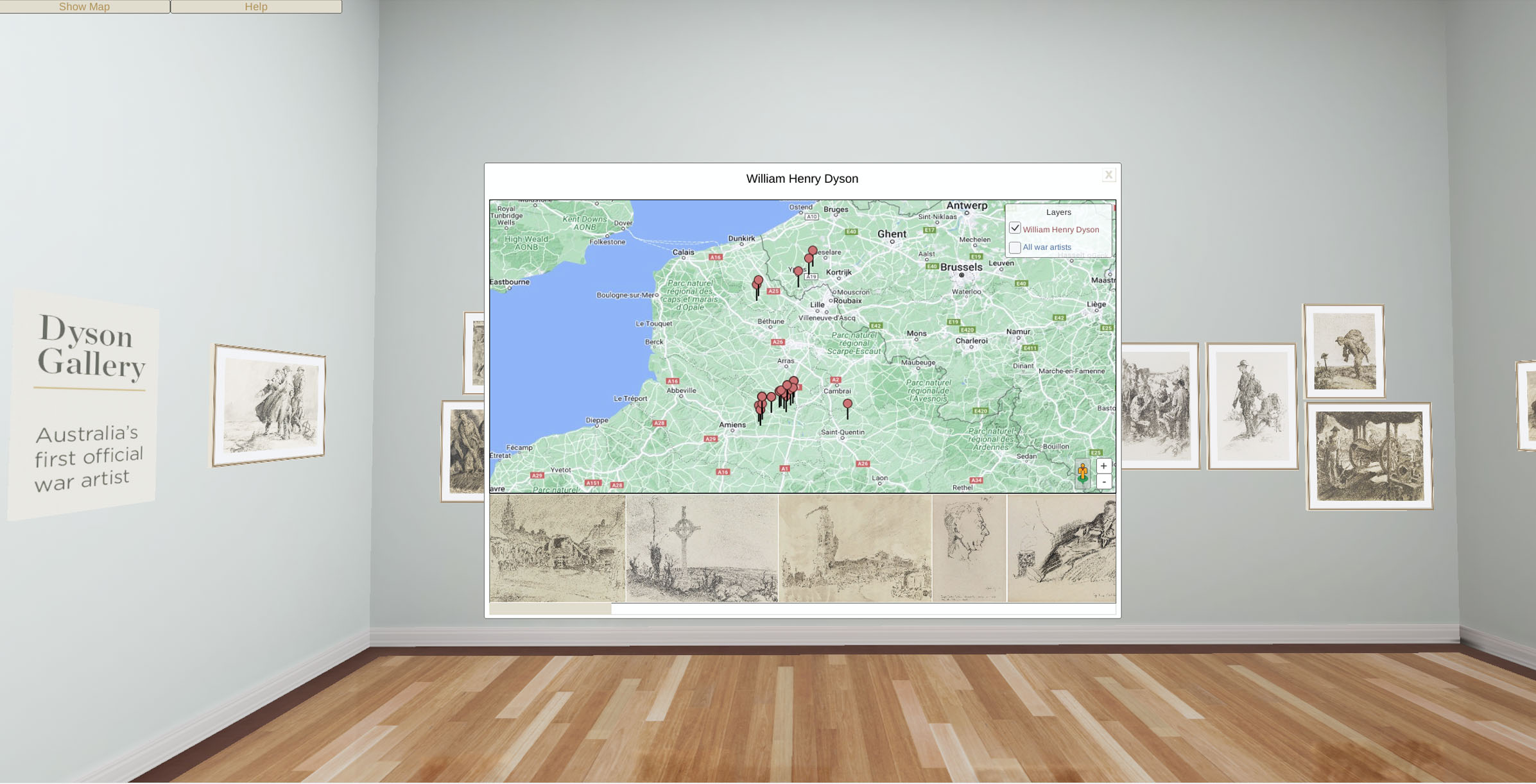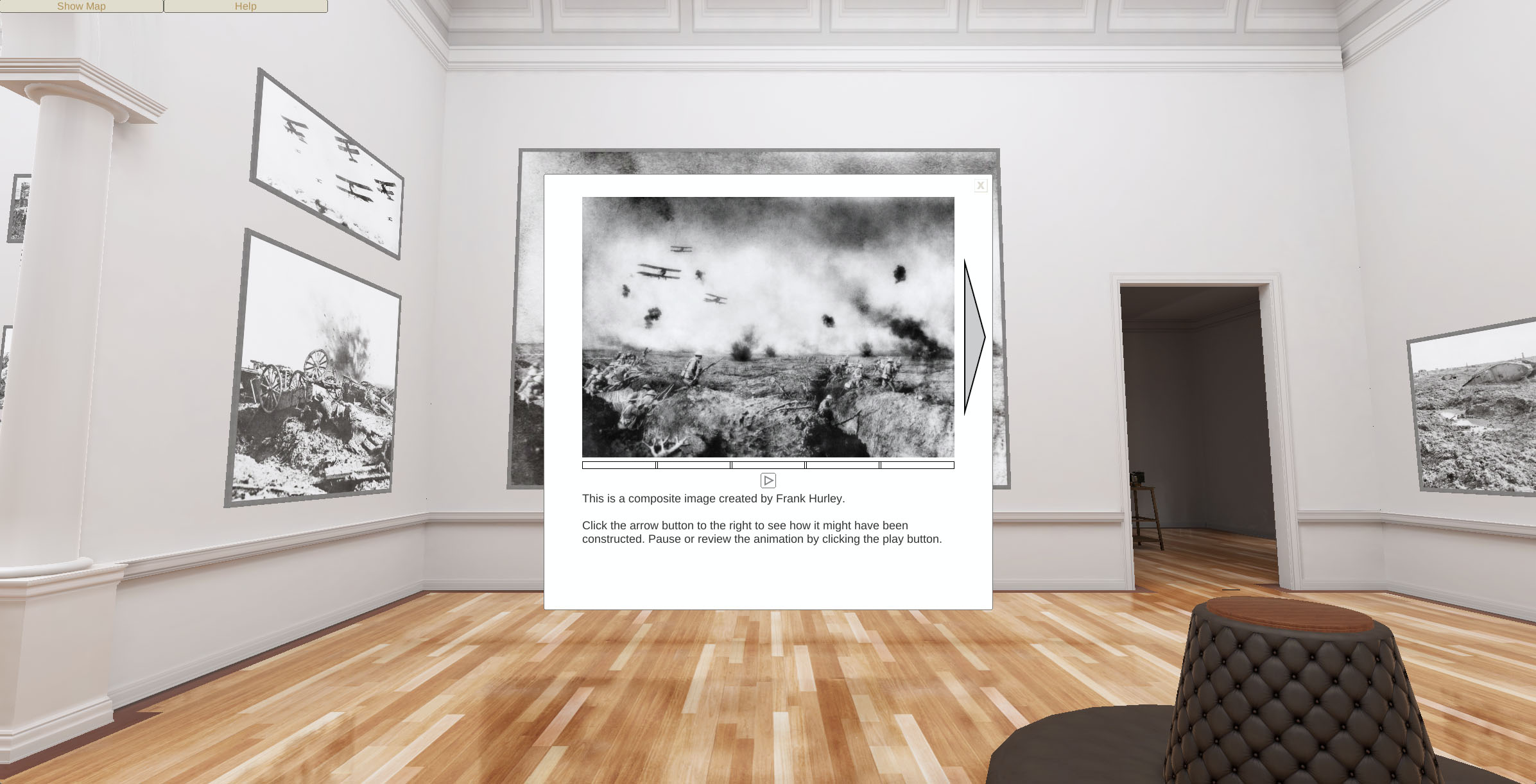Art of Nation
Winner of the 2018 Museums & Galleries National Award for Permanent Exhibition or Gallery Fitout.
Ortelia developed and delivered the entire project for the Australia War Memorial, including 3D modelling, real-time environment creation, and back-end web editor/publisher development. In 1919, Charles Bean returned from the war and captured his vision of the imposing neo-classical Australian War Memorial in a single sketch. This grand structure would house the war memorial collection, providing a solemn space to understand the experiences of Australian soldiers and to grieve for the fallen. It featured a central gallery with the Roll of Honour and large collection items, flanked by wings showcasing diverse collections. Among them, a dedicated gallery would exhibit history paintings commissioned from official war artists, depicting the Australian experience of the First World War.
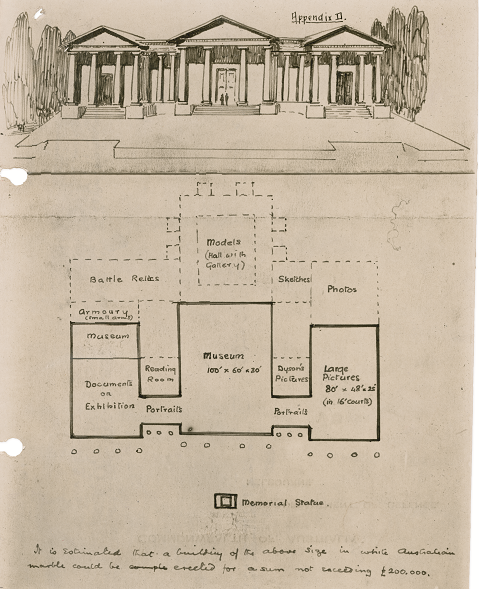
It took another 20 years for Charles Bean’s envisioned Australian War Memorial to become a reality, but the final result differed greatly in both architecture and collection from his original vision. Collaborating with Ortelia Interactive Spaces, the Australian War Memorial brought Bean’s vision to life as an online 3D navigable building. The building now houses the Memorial’s art and photography collections.
In the ‘East Wing’ of the building, the art collection has been presented as closely as possible according to Bean’s original curatorial vision. For the first time, visitors can see the Memorial’s First World War history paintings displayed as intended. On the other hand, the ‘West Wing’ showcases the Memorial’s Australian Official War Pictures and Photographs exhibition, which was initially staged by Captain Frank Hurley at the Grafton Galleries in London in May 1918. This exhibition features interactive displays that reveal Hurley’s collage and masking techniques used to compose his photographs.
In addition to the art and photography displays, the integrated map environment allows users to explore the landscapes and journeys that inspired the artworks. The mapping interface offers insights into the roles and activities of the official war artists, as well as the process behind each major painting. Visitors can compare historical depictions with present-day satellite imagery and photography of the same locations. With over 600 works of art, including paintings, photographs, sketches, and associated information, this web-based 3D environment offers a powerful and engaging way to interact with First World War history online.
Officially launched on November 9th, 2017, this project provides public access to back-of-house collections while raising the organization’s presence and profile. You can view the project on the Memorial’s website [here].

